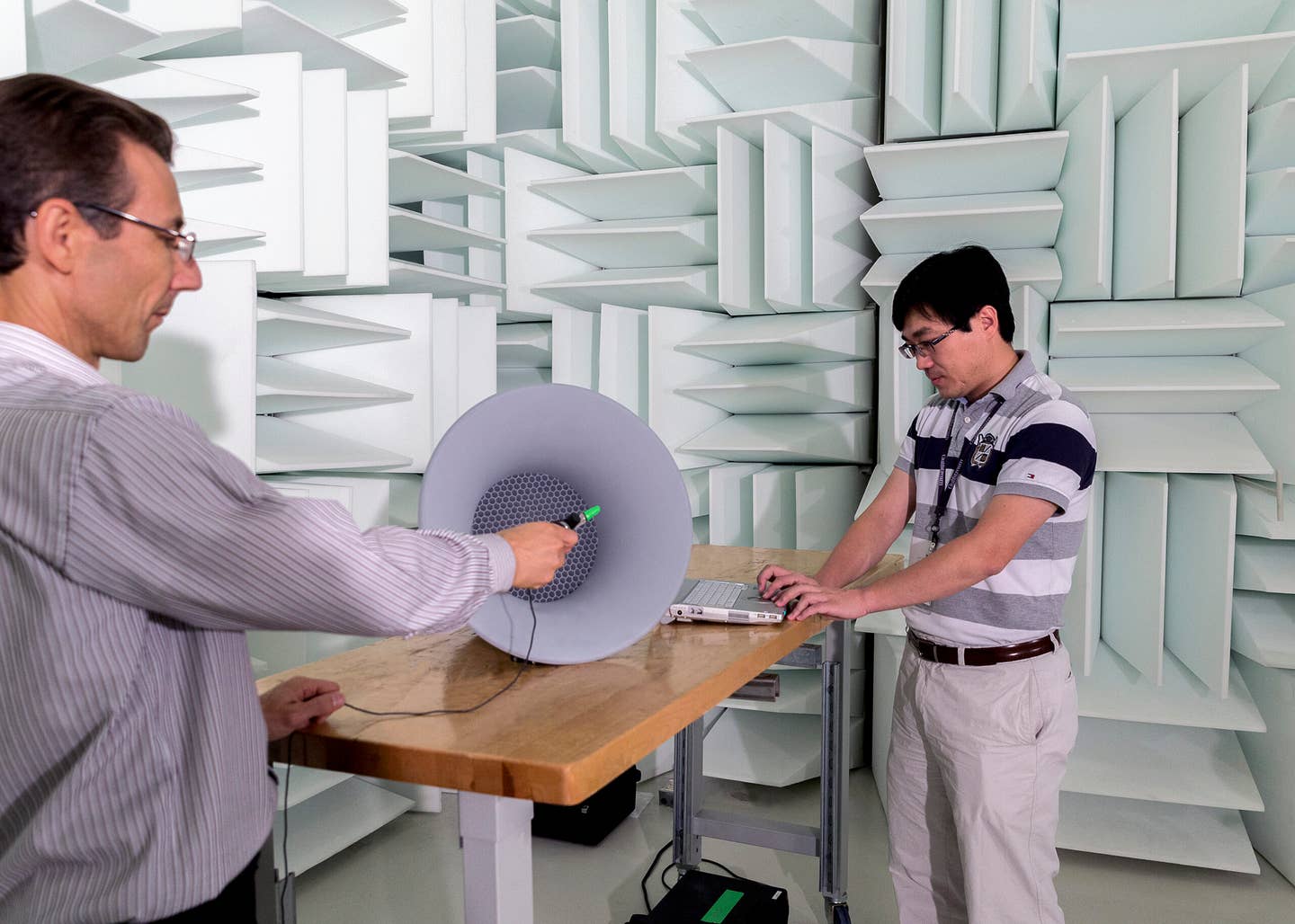
Gulfstream engineers in a company acoustics lab. Gulfstream Aerospace
Aircraft designers and aeronautical engineers (the distinction between the two is unimportant within the industry) use cutting-edge materials, systems and processes, along with their ingenuity, to create and improve aerial vehicles. Rob Wolz, director of project engineering for Advanced Aircraft Programs at Gulfstream Aerospace, currently overseeing the G500/600 program; Peter Sturdza, deputy chief engineer at Aerion Corp., which is developing the supersonic AS2 business jet; and Mike Blyth, co-founder of South Africa’s Airplane Factory and designer of sport aircraft including the Sling 2 and Sling 4 — he’s circumnavigated Earth in both — provided their expert advice on forging careers in this field.
What training is required to become an aircraft designer/aeronautical engineer?
Most positions require a bachelor’s degree within a broad range of engineering or science fields in addition to aeronautics or astronautics, such as mechanical, electrical, structural, materials and even civil engineering. Other jobs might require training in systems safety, human factors, air-vehicle integration or aesthetic design. Most people entering the field are expected to have CAD/CAM and CNC training and capability. Blyth notes he has no diploma (the South African version of a bachelor’s degree) in the field, but he took courses in mechanical engineering and architecture before becoming involved with aviation at age 30.
What skills beyond engineering excellence does the industry look for?
Companies want “people who are self-starters and don’t require too much handholding,” says Sturdza. Wolz stresses that “collaboration and communication skills” are essential because designers and engineers typically work in teams. Aircraft designers often lead groups of teams and must have organizational and leadership skills. Two decades into his career, Wolz got an MBA that “helps me understand the bigger picture” of development projects in relationship to corporate objectives, he says.
Is being a pilot important for an aircraft designer or aeronautical engineer?
Most aircraft designers and engineers aren’t pilots, and it’s not typically required, but any direct benefits aside, having a pilot’s license demonstrates an enthusiasm for the field that helps individuals stand out among colleagues, and is helpful in “having a connection with customers,” says Wolz, and in “dealing with pilots, and the FAA, and avionics manufacturers” as design professionals commonly do, Sturdza notes.
How does a grad get a foothold in the industry?
Start developing a network of industry contracts “early in your engineering education,” advises Wolz. “Look for opportunities to network, and for practical work experience through internships and co-ops (cooperative education programs).” Sturdza notes he began working with Aerion when writing his Ph.D. thesis on laminar flow technology, inspired by Aerion’s founder. “Sending out your resume is not nearly as effective as having some sort of relationship” with a potential employer, Sturdza says. Blyth also recommends considering the type of company you want to work for — “a small company where you’re involved in every aspect of design and development, or a larger company where somebody might specialize in brakes” — before plunging ahead.
What career considerations should be kept in mind?
“A difference in generations” is appearing in the aeronautical workforce, Wolz says, with today’s hires eager “to get on the fast track.” But careers typically progress less rapidly than the aircraft the field creates. “Things don’t happen overnight. You have to recognize that you have to work at it and grow, and earn respect and opportunities,” Wolz says.
The annual mean base pay for aeronautical engineers in mid-2015 was about $108,000, according to the U.S. Bureau of Labor Statistics, but ranges widely, depending on region, company and skills. But the careers offer fringe benefits few can match: “We get to design something, create it, test it, fly it, and then the most magnificent part of all is, we deliver it to customers and we change their lives,” says Blyth.
Learn more about aircraft design and aeronautical engineering careers here.

Sign-up for newsletters & special offers!
Get the latest FLYING stories & special offers delivered directly to your inbox






